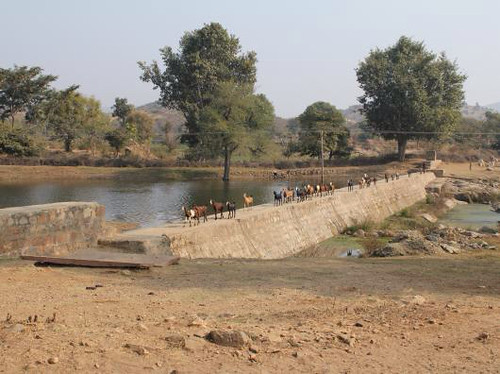In its quest to find new sources of energy, China is increasingly looking to its western provinces. But the nation’s push to develop fossil fuel and alternative sources has so far ignored a basic fact — western China simply lacks the water resources needed to support major new energy developmentIf you were to fly over the great continental expanse of China at night, you would find clusters of bright lights hugging near the eastern coast — sprawling, populous cities such as Beijing, Tianjin, Shanghai, Guangzhou, and Shenzhen. But the farthest west you travel, the fewer such illuminated megalopolises you would encounter. To be sure, China also has large cities in its interior, but they are fewer and farther between. Rather like the United States, China’s major centers of population and industry are concentrated near its eastern seaboard. So, too, are its energy needs.
Yet ironically, China’s great and untapped opportunities for developing both traditional fossil fuels and alternative energy lie primarily in its western hinterlands. For instance, the sparsely populated, sun-drenched northwestern province of Gansu is fast becoming a hub of China’s efforts to develop domestic wind and solar energy. Likewise, as eastern coal reserves are gradually depleted, new mining operations are under development in the western provinces of Inner Mongolia, Qinghai, Ningxia, Xinjiang, Shanxi, Shaanxi, and Gansu. But they also lie far from where most of the energy will eventually be consumed — and that’s the rub.
Transporting coal from western mines over long distances – via railroad or truck, or by barges drifting down the Yangtze River — is a costly, troublesome undertaking; freight charges can add more than 50 percent to the cost of coal. In adverse weather conditions, shipment becomes a precarious obstacle. When a 2008 blizzard blanketed southeastern China in snow and shut down major rail lines, the lights went off in several southeastern cities to which coal shipments were delayed. When last summer’s severe drought grounded barge traffic on the lower Yangtze, the largest utility company in downstream Shanghai announced that nearby factories would face rotating blackouts (despite its sheen of modernity, even mainland China’s wealthiest city is not immune to power failure).
The country’s top leaders have made provisions for both increasing overall coal production and easing the coal-transportation bottleneck. The most recent Five-Year Plan, the central government’s primary planning document, calls for significantly increasing coal production, which will be achieved by developing and expanding 14 large "coal-industry bases" across western China; these bases will include facilities for coal mining, petrochemical processing, and coal-fired power plants.
More



